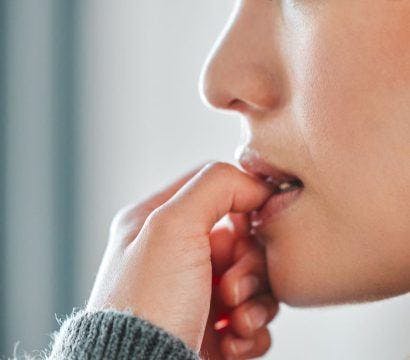Buck teeth, or the protrusion of upper front teeth, are a common dental issue many Australians face – and they’re really nothing to be ashamed of. But if the condition is affecting your (or your child’s) appearance, confidence, and oral health, you can choose from several treatments to fix the misalignment. Read on to understand the root causes, potential concerns, and effective methods to address them.
What are buck teeth?

Buck teeth refer to a dental misalignment (malocclusion) where the top front teeth protrude beyond the bottom front teeth. Simply, they are two or more teeth sticking out.
Buck teeth have often been called an overbite and sometimes an overjet. The former means the top front teeth come down or overlap over the bottom teeth. For overjets, the top teeth come further forward; some buck teeth even protrude out of the bottom lip.
Your buck teeth can be an overbite, an overjet, or both, depending on how the teeth noticeably stick out. Your dentist can provide a definitive diagnosis, but you can start with an online smile assessment to explore potential issues.
Severe protrusion can affect your health and even cause injuries, especially among children. A study by the University of Adelaide in Australia confirms a direct link between the degree of a child’s protrusion and the likelihood of dental injuries.
“Young children up to the age of six years with teeth that stick out more than 3mm have over three times higher chance of trauma than children without protruding teeth. Children over six years with teeth that protrude more than 5mm have over double the chance of trauma.”
Causes of buck teeth
Are buck teeth a result of genetics or lifestyle habits? Here are the possible causes:
Genetics
Your genetics may play a full or partial role in the development of buck teeth. Thanks, Mum and Dad! A Global Medical Genetics study notes how some physical features affecting your teeth are hereditary. These include your jaw shape and dental misalignments, like overbites and underbites. If you had buck teeth as a child or have them now, there’s a likelihood your child might inherit this trait.
Thumb-sucking
Excessive thumb-sucking can contribute to the development of protruding teeth, confirms the American Association of Pediatric Dentistry. When this habit persists beyond age 3, the pressure from the sucking motion can cause permanent teeth to erupt at abnormal angles.
Dummy overuse
Adding to this, prolonged use of dummies can also lead to buck teeth. The Journal of the American Dental Associations reveals: “Pacifiers were associated with a higher risk of developing most malocclusion features when compared with digit sucking.” To reduce this risk, wean your child off the dummy around age 2, before their permanent teeth start to emerge.
Tongue thrusting
Tongue thrusting, where the tongue pushes against the front teeth when swallowing or speaking, can also cause teeth to protrude, suggests an International Journal of Contemporary Dental and Medical Reviews study. This habit, which often begins in childhood, can continue into adulthood and lead to buck teeth.
Injuries
Facial trauma from accidents, falls, or sports can sometimes cause teeth to shift, resulting in misalignments, including buck teeth.
Concerns related to buck teeth
A study in the Journal of Orthodontics emphasises that complications may arise if the misalignment is left untreated. Buck teeth, in some cases, may lead to:
- Speech difficulties
- Difficulties eating or chewing
- Sleep disturbances
- Dental trauma
- Teeth grinding
- Jaw problems
How to fix buck teeth

You may wonder, can you get rid of buck teeth? Thankfully, there are several treatment options you can explore with your dentist to set your teeth into their proper position. Work with your dentist to determine the appropriate solution for your situation.
They might recommend palate expanders, which are attached to the upper molars, or traditional metal braces. If you’re looking for a more discreet, comfortable, and non-invasive option, ask your dentist about invisible aligners like ClearCorrect. These aligners consist of a tri-layer, medical-grade material called ClearQuartz, which makes them incredibly durable. They’re also the preferred choice for those with busy schedules as they require fewer visits to the dentist.
If buck teeth are affecting your daily life, don’t worry. So many treatment options are available. Schedule a visit to your dentist and get the best version of your smile.
References:
Baum, A. (2023, November 6). Impact of Pacifiers & Thumb Sucking on Children’s Teeth. American Association of Orthodontists.
Doğramacı, E. J., & Rossi-Fedele, G. (2016). Establishing the association between nonnutritive sucking behavior and malocclusions. The Journal of the American Dental Association, 147(12), 926-934.e6.
Leck, R., Paul, N., Rolland, S., & Birnie, D. (2021). The consequences of living with a severe malocclusion: A review of the literature. Journal of Orthodontics, 49(2), 228–239.
Lombardo, G., Vena, F., Negri, P., Pagano, S., Barilotti, C., Paglia, L., Colombo, S., Orso, M., & Cianetti, S. (2020). Worldwide prevalence of malocclusion in the different stages of dentition: A systematic review and meta-analysis. PubMed, 21(2), 115–122.
Neela, P. K., Atteeri, A., Mamillapalli, P. K., Sesham, V. M., Keesara, S., Chandra, J., Monica, U., & Mohan, V. (2020). Genetics of dentofacial and orthodontic abnormalities. Global Medical Genetics, 07(04), 095–100.



